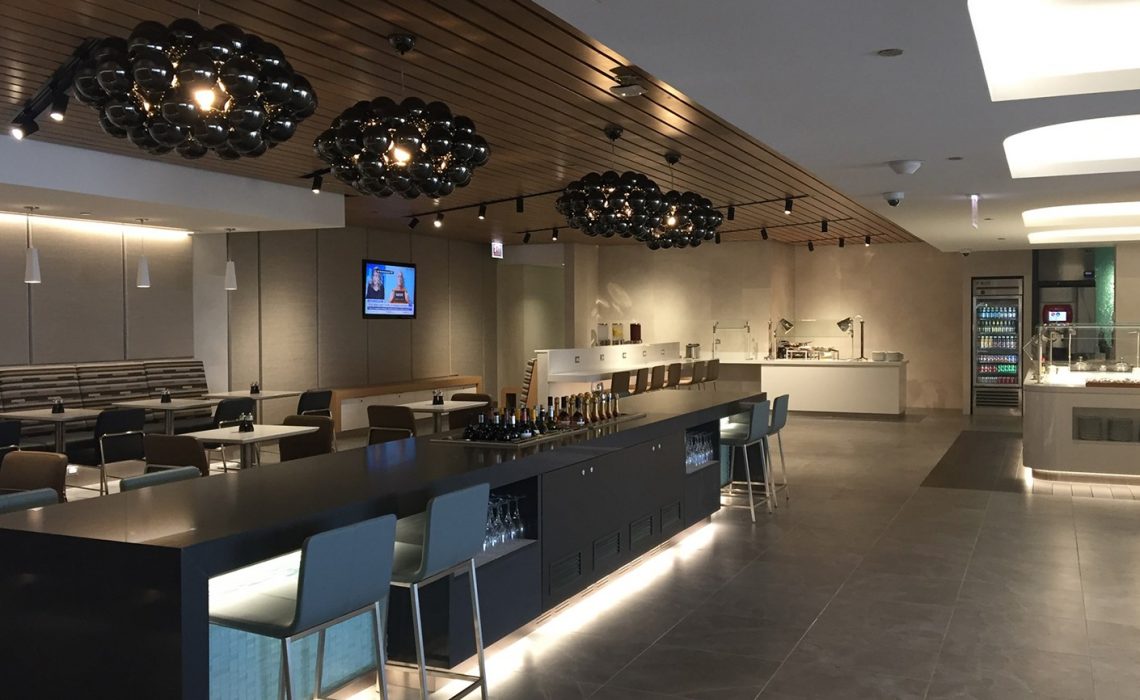
You might also like:
Carriers around the world, including the three largest U.S. ones, have been developing and opening new airport lounges, including specialized products for the highest level of premium travelers.
It’s a move that is long overdue, said Samuel Engel, senior vice president of consulting firm ICF’s aviation group. Airlines would not deny now that their lounges needed an upgrade to meet the premium traveler’s needs, he said. “Airlines have been slow to recognize that the lounge is part of the seamless experience for the customer.”
While-premium class seats are major passenger revenue drivers for airlines, lounges are more of a cost center, tools to attract premium travelers. Increasingly, airlines are realizing the importance of a consistent experience from the airport to the plane, he said.
American Airlines, for example, has opened four of its new Flagship Lounges — in Miami, Los Angeles, Chicago and New York’s John F. Kennedy International — and more are on the way in Dallas, Philadelphia and London.
The lounges include expanded seating, shower suites and such food and beverage amenities as a specialty cocktail bar and premium wines. Most of the lounges also provide a sit-down dining area for Flagship first-class passengers.
Over the past 18 months, Delta has opened flagship clubs in Atlanta and Seattle and Asanda Spa Lounges in Seattle, JFK and Atlanta. The carrier also has renovated its clubs in Newark and Minneapolis and expanded its club at Raleigh-Durham International.
Across many of its lounges, Delta has been expanding food and beverage options, including bars with craft beers, seasonal cocktails and sommelier-selected wines at about 20 locations.
United Airlines last year opened lounges in San Francisco and finished renovation and expansion of two in its Houston hub. The carrier has delayed the openings of some of its Polaris lounges –only Chicago is open — but expects to open them in San Francisco, Newark, Houston and Los Angeles this year. Washington Dulles, London Heathrow, Tokyo Narita and Hong Kong will follow.
As the Polaris delays indicate, premium lounge rollouts are complex undertakings and can take years even once they are conceived, Engel said. In the interim, airline-agnostic lounges, for which passengers can pay to enter or can gain entry through such avenues as credit card programs rather than airline class or status, have proliferated.
“United’s Polaris is very attractive, and the new [American Airlines] Admirals Club is a tremendous upgrade, but you’ve had a 10-year gap that has created an opportunity for some smart entrepreneurs,” Engel said.
Among those is Airport Lounge Development, which runs 17 lounges with “aggressive plans for expansion,” senior vice president Nancy Knipp said.
They have proven particularly popular to travelers who are unable to get credentials to get into carrier lounges.
“In the last few years, the ability to get to higher tiers is becoming more challenging, and the cost of flying in a premium cabin can be difficult,” Knipp said. “Travelers don’t have the ability to get into them.”
Most of ALD’s lounge traffic comes from global membership programs like Priority Pass or Lounge Key, and most of the travelers opt for those programs on their own rather than as part of an organized effort by their corporate travel programs to get membership, she said.
Both the airlines and private lounge developers are looking to address crowding issues at peak times. It presents a challenge, as airports have limited real estate, and airlines often have to spread out into several smaller lounges, which can get packed, Engel said.
Some of those solutions have been size-based. In December, United added 60 seats and a secondary buffet area to its Polaris lounge in Chicago, increasing its space by about 25%, a spokesperson said. When opening its new terminal in Seoul, Korean Air made sure its combined lounges could seat 600 to handle the massive amounts of passengers that can build up with its A380 traffic. It also built exclusive lounges for top-tier travelers.
Airlines also can make entry more restrictive. Delta, for example, next year plans to limit Sky Club members’ access to travelers with same-day boarding passes for Delta or one of its partner airlines.
Lounge design can maximize space, such as using banquette seating or communal tables rather than four-seat tables, Knipp said. In Atlanta, ALD implemented a hostess program to help visitors find seats during peak hours, she said.
Whatever the approach, a consistent experience for travelers ultimately proves more important than the finest amenities, Engel said.
“The hard product is important, but a lounge for a customer should offer peace of mind,” he said. “It should be a safe space to walk in, put down their bag without worrying about it, get coffee or a drink without hunting, find Wi-Fi and have the best reservations agents there to help them with any changes.”
Source: travelweekly.com
